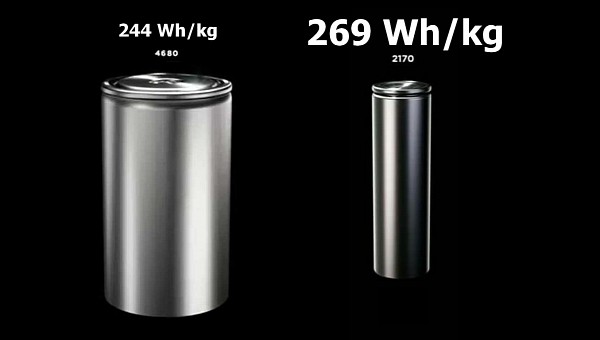On September 18, a video from The Limiting Factor YouTube channel helped us to discover the 4680 cells Tesla is putting in its cars are just ordinary and big NMC batteries. Ironically, that was the best-case scenario for these cells. A new video from the same channel revealed that they are actually worse than that, with a lower energy density and more cobalt.
According to an analysis made by the University of California (UC) San Diego, the 4680 cells on the Tesla Model Y made at Giga Austin offer just 244 Wh/kg. That’s way less than the 269 Wh/kg of the Panasonic 2170 batteries used by the Model Y produced in Fremont or the 252 Wh/kg of the LGES cells put in the Model Y and Model 3 that leave Giga Shanghai.
UC San Diego analyzed a cell that The Limiting Factor bought from the Model Y torn down by Munro Live. The $800 component (yes, you read it right) helped the university discover another negative aspect of the Tesla supercell: it uses more cobalt than other NMC batteries. The logical path would be for the 4680 cells to use more nickel, which helps create more energy-dense batteries. If they don’t, there must be a strong reason for that, but we’ll probably never know what it is.
The lower energy density partly explains why the Texan Model Y is heavier than the one made in Fremont. The castings to form the vehicle structure are the other reason for the higher mass. If castings make it easier to manufacture a heavier car, that will lower the range of electric vehicles. That is probably one of the reasons for Oliver Zipse to say, “partially lower manufacturing cost is overcompensated by casting costs.” The BMW CEO also said his company had “much more efficient ways to build a car body.”
The Limiting Factor believes Tesla made a heavier vehicle because it was likely cheaper to build than the traditional Model Y. If that is indeed the case, the EV maker will have decided to deliver a worse EV than the ones it previously made just to save some bucks, which is probably not what its customers would like to hear. Knowing all the promises it made for these batteries are just for its future iterations (if ever) is also not very comforting for the folks who were anxious to buy or who actually purchased a Model Y from Giga Austin. At this point, they would be better off with a Fremont or Giga Shanghai unit.
UC San Diego analyzed a cell that The Limiting Factor bought from the Model Y torn down by Munro Live. The $800 component (yes, you read it right) helped the university discover another negative aspect of the Tesla supercell: it uses more cobalt than other NMC batteries. The logical path would be for the 4680 cells to use more nickel, which helps create more energy-dense batteries. If they don’t, there must be a strong reason for that, but we’ll probably never know what it is.
The lower energy density partly explains why the Texan Model Y is heavier than the one made in Fremont. The castings to form the vehicle structure are the other reason for the higher mass. If castings make it easier to manufacture a heavier car, that will lower the range of electric vehicles. That is probably one of the reasons for Oliver Zipse to say, “partially lower manufacturing cost is overcompensated by casting costs.” The BMW CEO also said his company had “much more efficient ways to build a car body.”
The Limiting Factor believes Tesla made a heavier vehicle because it was likely cheaper to build than the traditional Model Y. If that is indeed the case, the EV maker will have decided to deliver a worse EV than the ones it previously made just to save some bucks, which is probably not what its customers would like to hear. Knowing all the promises it made for these batteries are just for its future iterations (if ever) is also not very comforting for the folks who were anxious to buy or who actually purchased a Model Y from Giga Austin. At this point, they would be better off with a Fremont or Giga Shanghai unit.








